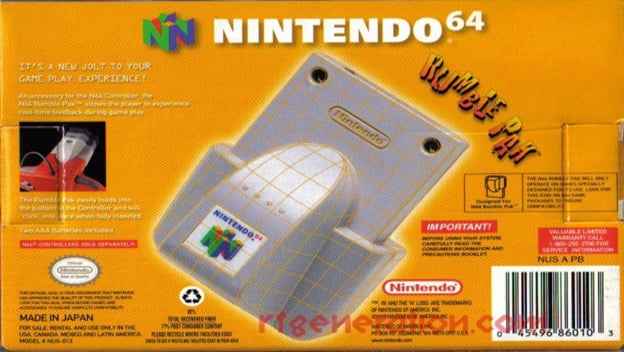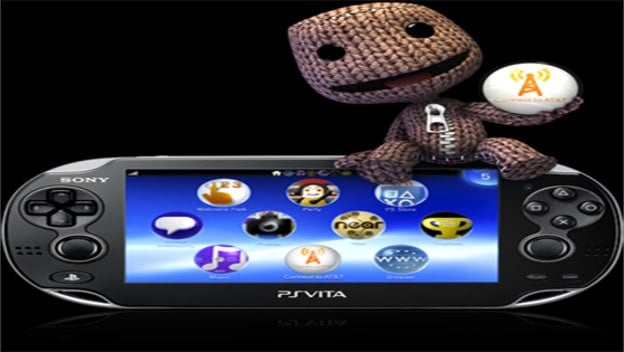Recently, Cheat Code Central’s Sean Engemann wrote a little piece explaining why he’s tired of his fellow game journalists unabashedly hating on alternative control schemes . The thing Sean had the biggest problem with, apparently, was the overuse of the word “gimmick.”
Now, Sean is a good friend of mine, and I have a ton of respect for his opinions. However, this whole gimmick thing is something he and I just don’t see eye to eye on. I mean, I’m as willing as he is to accept and even praise innovation in the games industry; God knows, it’s something we desperately need at this point. But sometimes—too often, in fact—these alternate control schemes simply fail. And as game journalists, as people who write game reviews for a living, those failings are something we’re obligated to point out to our readers.
One of Sean’s points of concern was that reviewers seem to be overly harsh on the PlayStation Vita. Here’s the thing about that, though: A lot of games on the Vita, especially those in its early lineup, use bizarre control configurations even though they seem counterintuitive. Now, Sean pointed at Uncharted: Golden Abyss as an example. He explained that we shouldn’t be overly critical of, say, the ability to have Nathan Drake swing from a vine by tilting the Vita. I agree with this, actually, as there is a face-button-based alternative. In fact, I was actually quite impressed that I was able to swipe ledges on the touchscreen to make Nate climb across them. It was a great use of the Vita’s touchscreen that actually made the game more fun to play.
But in this same game were sections where players were forced to guide Nate over a log that was precariously placed over a dangerous ravine. When one came to these sections, there was a mandatory minigame where players had to tilt the Vita in order to have Nate balance safely across. The controls here weren’t exactly the most refined, and more often or not these sections would lead to unnecessary deaths. In fact, Golden Abyss would be a better game without them.
And that’s really the key factor when it comes to the acceptability of any new feature. Sometimes, alternate control schemes do nothing but make players aware of the feature list of a specific piece of hardware. It’s self-congratulatory at best, and downright obnoxious—or even game-breaking—at worst. In such instances, how can are we supposed to call a gimmick anything but a gimmick?
Another example Sean pointed at was the N64’s Rumble Pak, an accessory that caused the N64 controller to vibrate. This was popular enough that it became an industry standard, and most game controllers these days take advantage of vibration in one way or another. I think we can all agree that the rumble effect was a positive innovation for gaming as a whole.
But, if I’m remembering my game history correctly, the rumble effect wasn’t a feature that immediately launched to unanimous critical approval. In fact, I remember it being called a pointless gimmick in its early days. I think the turning point for a lot of us was Metal Gear Solid, which finally used the PlayStation’s DualShock controller for some really cool and innovative effects. Remember that fight against Psycho Mantis? He’d make us set the controller on the floor and would show off his psychic powers by making it vibrate its way across the floor. That blew our minds.
Now, I want to point out that other people would probably cite earlier games, like Star Fox 64, as the moment rumble became cool. For me, though, Metal Gear Solid was the game that really made the feature click.
When games start using motion controls and touchscreen features in innovative new ways that legitimately make those games more fun to play, they’re totally fine. For example, Wii Sports was so insanely popular because using the Wiimote to play various digital sports was undeniably fun. More recently, Escape Plan let you push objects from the background into the foreground by tapping the Vita’s rear touchpad. LittleBigPlanet Vita includes a similar feature, and it’s great. But there are too many games that only use the touchpad because it’s there, even though there’s no real reason for it.

Now, I just want to say that I agree with Sean that if we of the gaming press continue to bash anything even remotely innovative, game developers will be unwilling to try new things for fear that the reviewers are going to hate them. But I also feel that when something innovative on paper just plain doesn’t work in practice, it’s our job to let people know about it.
I’m all for innovation in the games industry, but that doesn’t mean I’m not tired of the sort of failed gimmickery that tends to accompany it.
Also, I like the word gimmick . It communicates the idea that a specific feature is only put into a game to draw attention to itself rather than to legitimately make the game a better experience for the players.
I’m sure the Vita’s features will ultimately have that sort of “aha!” moment that the rumble feature had when Metal Gear Solid (or Star Fox 64) proved to us that it was a legitimately cool feature. But proper use of innovative features takes creativity, time, and resources, and too often development studios just aren’t creative enough, or simply aren’t given the time and resources they need, in order to make proper use of them.
Ultimately, you have to ask yourself whether a feature is beneficial to gameplay. If it is, then let’s celebrate it. But if said feature actually detracts from a game, or makes the game less fun to play, then why can’t we call it a gimmick? After all, isn’t that exactly what it is?
 | By Josh Wirtanen Editor / Social Media Date: January 24, 2013 |
